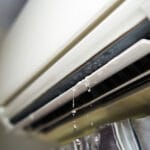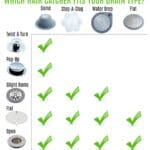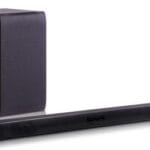A GE washer with a water level that’s too low might need a reset or water level adjustment. Checking the user manual for specific instructions is crucial.
A GE washer is a staple in many homes, offering the convenience of doing laundry with ease and efficiency. Yet, sometimes, users might encounter issues such as the water level being too low, which can affect the machine’s performance and the cleanliness of the laundry.
This problem might stem from various factors, including settings errors, malfunctioning sensors, or clogged hoses. Addressing this issue promptly ensures your washer operates optimally, conserving water and energy while providing your clothes with a thorough clean. Understanding the common causes and solutions can help you quickly rectify the problem, ensuring your laundry routine gets back on track without unnecessary delays.
Introduction To Ge Washer Water Levels
GE washers are known for their efficiency and features. One key aspect is the water level for each wash cycle. Proper water level is crucial for optimal cleaning. Users often face issues with water levels that seem too low. This can affect the washer’s performance.
Common Complaints
Many users report concerns with their GE washer’s water level. Some common grievances include:
- Water not covering clothes
- Cycles running with little water
- Laundry not fully submerged
Impact On Laundry
Low water levels can lead to several laundry issues. These include:
- Inadequate cleaning
- Uneven soap distribution
- Fabrics not rinsed properly
The Importance Of Proper Water Levels
When using a GE washer, water levels matter a lot. They affect how clean your clothes get. They also keep your clothes safe during a wash cycle. Let’s dive into why the right water level is key for laundry day success.
Effectiveness Of Washing
Proper water levels ensure a thorough wash. Your GE washer needs enough water to mix with detergent. This creates the right cleaning solution. Too little water means less movement in the drum. This can leave dirt trapped in fabrics. Clothes need to move freely for the best wash results.
- Optimal water allows detergent to work well.
- Low water levels might not rinse out all the soap.
- Clothes must tumble properly to get clean.
Protection Of Fabrics
Water acts as a buffer between clothes and the washer drum. The right level protects your fabrics. Too little water can cause friction. This leads to wear and tear on your clothes. Delicate items need gentle treatment. Enough water provides this.
| Water Level | Fabric Safety |
|---|---|
| High | Protects clothes |
| Low | May damage fabrics |
Keep your clothes looking new. Check your washer’s water level settings. Make sure they fit the load size and fabric type. This will help your clothes last longer.
Identifying Low Water Level Issues
Identifying Low Water Level Issues in your GE Washer can be puzzling. A washer that doesn’t fill properly might not clean clothes well. Let’s figure out if the water level is too low.
Signs And Symptoms
- Clothes are not fully submerged.
- The washer finishes cycles quickly.
- Laundry comes out with dry spots.
- Soap residue remains on clothes.
Comparing With Standard Levels
It’s important to know what’s normal for your model. Check the manual for standard water levels. Use a measuring jug to check the water in your machine. Compare your findings with the manual’s specifications.
| Model | Standard Level | Measured Level |
|---|---|---|
| GE Model #1 | 20 liters | 15 liters |
| GE Model #2 | 25 liters | 18 liters |

Credit: avivservicetoday.com
Factors Leading To Low Water Levels
Struggling with a GE Washer where water barely covers your clothes? You’re not alone. Many users face the issue of low water levels in their washing machines. Let’s delve into the factors that may be causing this frustrating problem.
Machine Settings
Modern GE washers come with various settings. Some are designed to save water. Users often choose these settings unknowingly. This leads to less water during cycles. Here’s what to check:
- Load Size – Ensure the correct setting matches your laundry load.
- Wash Cycle – Some cycles use less water for delicate fabrics.
- Water Level Adjustment – Some models let you adjust water levels manually.
Review your user manual. It provides guidance on settings for optimal water levels.
Technical Faults
Technical issues can also cause low water levels. Common faults include:
| Part | Function | Signs of Fault |
|---|---|---|
| Pressure Switch | Monitors water level | Inaccurate water fill |
| Water Inlet Valve | Controls water flow | Low water flow |
| Hose Clogs | Connects to pressure switch | Pressure misreads |
Inspect these parts for blockages or damage. Replace them if needed to restore water levels.
Manual Adjustments For Immediate Fixes
Dealing with a GE washer with water levels too low can be frustrating. Quick manual adjustments can resolve this issue. This guide will walk you through two immediate fixes.
Adjusting Load Size Settings
GE washers offer different load size settings. These settings control the water level. Use the following steps to adjust the water level:
- Turn the washer knob to your desired load size.
- Choose from small, medium, large, or extra-large options.
- Restart the wash cycle and observe the changes.
For small loads, select a lower setting. For larger loads, a higher setting works best.
Water Level Override
Sometimes, the default water level may not suffice. GE washers allow for a water level override. Follow these steps:
- Locate the ‘Deep Fill’ option on your washer’s control panel.
- Press the ‘Deep Fill’ button once before starting your cycle.
- Press it again for an extra water boost, if needed.
This override adds more water to the cycle. It ensures clothes submerge properly.
:max_bytes(150000):strip_icc()/repair-washing-machine-water-level-fill-switch-1824607-hero-f7677789212746bdb1be2eaad58be1dc.jpg)
Credit: www.thespruce.com
Long-term Solutions And Upgrades
Owners often face a common issue with GE washers: water levels too low. This can affect laundry results. Long-term solutions and upgrades can prevent this problem. Let’s explore these options for better washing performance.
Regular Maintenance
Proper upkeep is crucial for washer performance. Here are steps to maintain your GE washer:
- Check the water hose regularly for kinks or blockages.
- Inspect the screens at the hose connections for debris buildup.
- Clean the washer drum monthly to prevent sensor issues.
- Review the user manual to understand maintenance needs.
Considering A High-efficiency Model
Upgrade to a high-efficiency washer for better water usage. Benefits include:
| Feature | Advantage |
|---|---|
| Less Water | Uses less water per cycle, saving resources. |
| Energy Efficient | Reduces energy bills with efficient operations. |
| Advanced Technology | Offers precise water levels for optimal cleaning. |
Expert Tips To Optimize Your Wash
Are you facing issues with a GE washer water level that seems too low? Worry not! Proper wash optimization can lead to better cleaning performance. Discover some expert tips to get the most out of your washing machine. Use the right detergent and sort your laundry smartly. Your clothes will thank you with a longer lifespan and fresher feel.
Choosing The Right Detergent
Detergent choice makes a huge difference. High-efficiency (HE) detergents work best for low water levels. They create fewer suds and provide optimal cleaning. Always check detergent labels for the ‘HE’ symbol. Use the recommended amount for your load size. Too much can leave residue on clothes. Too little won’t clean effectively.
Sorting Laundry Effectively
Sorting isn’t just about colors. It’s about fabric types and soil levels too. Group similar items together to ensure an even wash. Separate towels and heavy cottons from lighter fabrics. This prevents damage and ensures each piece gets the clean it needs. Don’t overload your washer. It needs space to move clothes through the water.
Follow these tips for a wash that’s both thorough and gentle on your garments. Your GE washer will perform better, even with low water levels.

Credit: www.dtappliance.com
When To Call In The Professionals
Are you facing issues with your GE washer’s water level? Sometimes, troubleshooting at home is not enough. Professional help becomes necessary to ensure your appliance runs smoothly.
Recognizing Complex Issues
Several signs indicate a need for expert assistance:
- Water level errors persist after resets.
- Error codes appear on the display panel.
- Machine parts are visibly damaged.
- DIY fixes don’t solve the problem.
These issues suggest a deeper malfunction within your washer’s system.
Finding A Reliable Service
Selecting the right technician is crucial:
- Seek certified GE repair services.
- Check for positive customer reviews.
- Compare service costs from different providers.
- Ensure quick response times for urgent repairs.
Choosing a skilled professional will restore your washer’s performance.
Frequently Asked Questions
How Do I Increase The Water Level In My Ge Washer?
To increase the water level in your GE washer, adjust the settings using the control panel. Select the load size or water level button to increase the amount of water. Ensure your model supports manual water level adjustments, as some newer models automatically adjust the water level.
Why Is My Ge Washing Machine Not Filling With Enough Water?
A GE washing machine may not fill properly due to a clogged inlet screen or a faulty water inlet valve. Ensure the hose is not kinked and check for proper water pressure.
Why Is The Water Level In My Washing Machine Too Low?
Low water levels in your washing machine could be due to a clogged inlet screen or a malfunctioning water inlet valve. Check and clean the screen, or consider replacing the valve for optimal performance.
Why Is My Washer Barely Filling Up With Water?
Your washer may barely fill up due to a clogged inlet screen or a faulty water inlet valve. Checking and cleaning the screen or replacing the valve can resolve the issue. Ensure the water supply is on and unobstructed for optimal performance.
Why Is My Ge Washer Filling So Low?
GE washers may fill low due to water pressure issues, incorrect load size settings, or a malfunctioning water level sensor.
Conclusion
Wrapping up, addressing a GE washer’s low water level is crucial for optimal laundry results. By exploring fixes and understanding machine specifics, you can ensure your garments emerge perfectly clean. Remember, regular maintenance and prompt troubleshooting keep your appliance running efficiently.
Happy washing!




